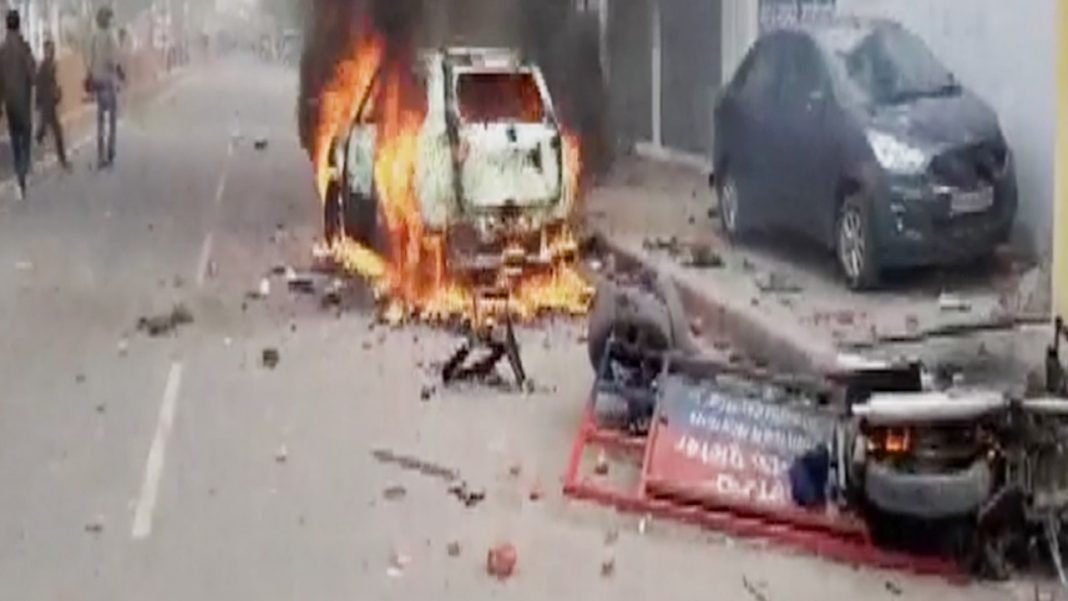Hundreds of protesters, who participated in a series of anti-Citizenship Act protests in Uttar Pradesh last month, have received recovery notices from the police asking them to pay the damage done to public property. The move followed Chief Minister Yogi Adityanath’s warning of “revenge” and “punishment”. The notices cited the 2010 Allahabad High Court order that empowered the state to recover damages.
The Allahabad court had then pulled up the UP government for its “complete apathy” in implementing the provisions of the Prevention of Damage to Public Property Act 1984 and the Supreme Court’s 10-point guideline in 2009 to recover the damages incurred during protests and agitations.
The Allahabad High Court based its order on the mechanism to assess and award the damage on the top court’s ruling. But it also contradicts the order by directing a state to initiate recovery proceedings when the Supreme Court had authorised the high courts to do so.
Supreme Court directed High Courts to process recovery claims
The Supreme Court had in 2009 deemed the concerned state high court as an appropriate authority to assess the damages and recovery from the accused. However, the Allahabad High Court shifted the onus to an authority established by the state government. This order can be said to be in serious violation of the principles of natural justice as well.
In 2009, taking suo motu cognisance of various instances of destruction of public property and arson during demonstrations and agitations, the Supreme Court set up two committees which were headed by former apex court judge K T Thomas and senior advocate Fali S Nirman to suggest changes to the law to assess and recover the damages.
The Supreme Court had suo motu laid down 10-point guideline based on the recommendation of these two expert committees, in its judgment in Re: Destruction of Public and Private Properties Vs State of Andhra Pradesh and others.
The Thomas Committee recommended restitution of the damages incurred by shifting the burden of proof from the prosecution to the protesters, once it is established by the prosecution that the property had been damaged in the direct action called by an organization, and the accused was part of such direct action. Once the burden of proof shifts to the protester, the accused is required to prove his innocence.
The court also asked the legislature to amend the law to give the court the power to draw a presumption that the accused is guilty of destroying public property. Such reversal of the burden of proof is applicable in cases of sexual harassment, rape and other such cases of similar nature, an exception to the general law that presumes the accused is innocent until the prosecution proves its case.
The Supreme Court bench also said that in the absence of legislation, the high court could take suo motu cognizance of any such instances of mass destruction to both public and private property due to protests and agitations. All the claims related to the damages are to be processed by the High Court.
The High Court of each state is expected to set up investigative machinery to investigate the damaged caused and assess the amount of compensation to be awarded. In case, where the damage has taken place in more than one state, the action may be taken by the Supreme Court, instead.
As and when any incident of damage to the public property takes place, during protests or agitations called at the invitation or instance of a political party or a sitting or former people’s representative, a report shall be registered by the concerned police station against such political party/person by name. Similar would be the action if such loss is caused by any other identifiable person or group.
The damage suffered to public property shall be assessed, the concerned department, local body, public corporation, etc., i.e., the owner of the property shall file a claim for realization of such amount from the political parties/persons, as directed above, before the Competent Authority, as nominated by the Government in this regard, within next seven days.
What Allahabad High Court had held on the matter
The Allahabad High Court directed the executive i.e., state administration to adjudicate the accused as offenders and assess the exemplary damages to be recovered without any judicial oversight or supervision. Exemplary damage seeks to punish a wrongdoer in order to deter others from the same wrongful conduct. It is designed to deter such wrongful conduct in the future, rather than compensate for a particular loss or injury.
In Uttar Pradesh, the police without any investigation and providing the opportunity of hearing to the person involved, has sent notices of recovery to 28 people. Such action on the part of the State government can be arbitrary and misuse of power, especially in prevailing in similar incidents of protests over a political issue.
Karnataka takes a cue from UP, while Delhi follows SC order
The Karnataka state government may adopt Uttar Pradesh’s policy of recovering the cost of damage to public property from the rioters, said state Revenue Minister R Ashoka last month.
However, the Delhi police have written to the Delhi High Court to appoint Claims Commissioner as directed by the Supreme Court in 2009, to assess the damages and investigate the liability. Protests had turned violent in Daryaganaj and Seelampur-Jaffrabad area last month where many vehicles were set on fire.


